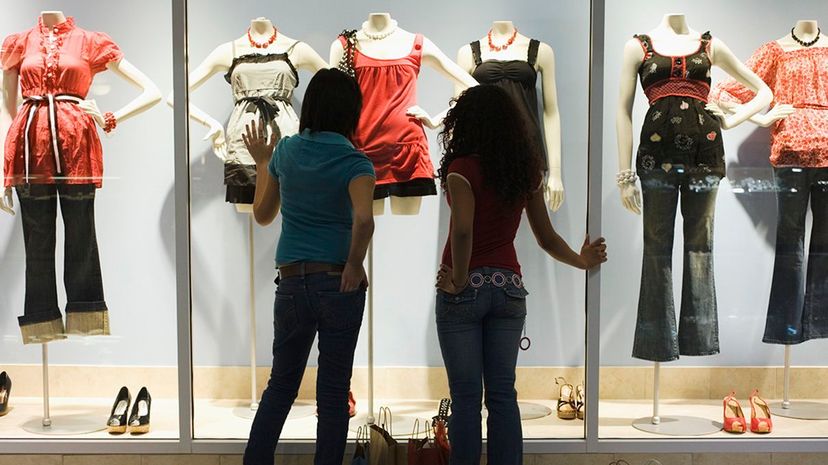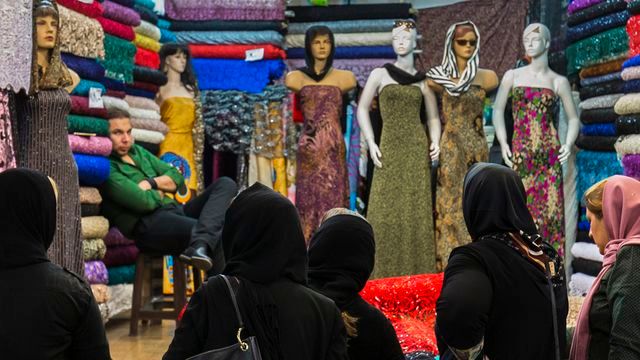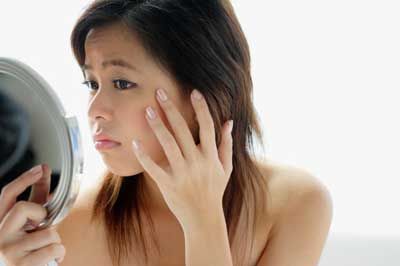
Have you ever, like just for funsies, walked up to a table and compared the circumference of its leg to that of your own human leg? If not, that's fine. Honestly, we're not in the habit of critically comparing our bodies to most types of furniture, with one notable exception: department store mannequins.
Mannequins are made to look like humans, but they're really just furniture for stores to display clothes on. However, because they are human-shaped, there's a little part of each of us that looks at a mannequin and says, "Oh, that's what I'm supposed to look like in those jeans!" The problem is, reports a study published in the Journal of Eating Disorders, that the average female mannequin represents a body type that's not just underweight, but severely, dangerously thin. On the other hand, only about 8 percent of male mannequins represent an underweight body size.
Advertisement
The researchers from the University of Oxford and the University of Liverpool assessed the sizes of 32 female mannequins and 26 male mannequins from 17 fashion retailers in Liverpool and Coventry, U.K., and found that 100 percent of female mannequins were underweight, while only 8 percent of male mannequins represented an underweight person.
"The problem with mannequins is that they inherently represent how we should look, when to look like that would mean becoming unhealthy," says co-author Dr. Paul Aveyard, Professor of behavioral medicine at Nuffield Department of Primary Care Health Sciences at the University of Oxford.
Fantastically unrealistic standards of thinness are everywhere in mass media, and its ubiquity has been linked to women feeling dissatisfied with their body size, and the desire for an ultrathin physique has been shown to lead to eating disorders like anorexia and bulimia. According to co-author Dr. Eric Robinson, of the University of Liverpool, women are far more likely than men to develop eating disorders, which makes sense because they are also far more heavily targeted with the message that extreme thinness is the ideal.

"Not everyone will develop an eating disorder from having the ultrathin ideal pushed upon them, and it is difficult to say why some people develop them and others don't," says Robinson in an article explaining his research published on The Conversation. "However, the academic community is pretty convinced that promotion of ultrathinness is a major player in eating problems, and that it is responsible for the propagation of body image problems in young women."
And yes, it's a shame that even the furniture in most retail clothing stores reinforces this, but it turns out that "No Fat Chicks" isn't exactly a new message — at least not when it comes to mannequins. In 1992, Finnish researchers examined six female mannequins made in Italy, Japan and Malaysia between the 1920s and 1960s, and found that if real women had the body dimensions of these dummies, they would be unable to menstruate. Eighty years later, here we are.

But the silver lining to all of this is that, here in the 21st century, people are taking notice and some things are changing. Just this month, a French law banning the use of ultrathin fashion models (and requiring labelling on photos where the model's body has been digitally retouched) has come into effect. And according to Aveyard, over the past few years, some shops in the U.K., like Debenhams, have rolled out U.K. size 16 (U.S. size 12) mannequins.
"Of course, these body shapes are also unrealistic — they have flat stomachs," says Aveyard. "Most women do not have flat stomachs, even slim women. So this is good, but we should all put pressure on shops not to present unrealistic shapes to us."
The process of representing women's bodies in realistic ways everywhere, from magazines to department store dressing rooms, is proving to be a slow one, but Robinson and Aveyard would argue it's worthwhile:
"The point about any one aspect of society is that it contributes a little by itself to the overall effect that we call 'culture,'" says Aveyard. "Removing ultrathin mannequins would not by itself make much of a difference, but we should try to remove unrealistic ideals from our society with the hope that it would make us all happier and healthier."
Advertisement

